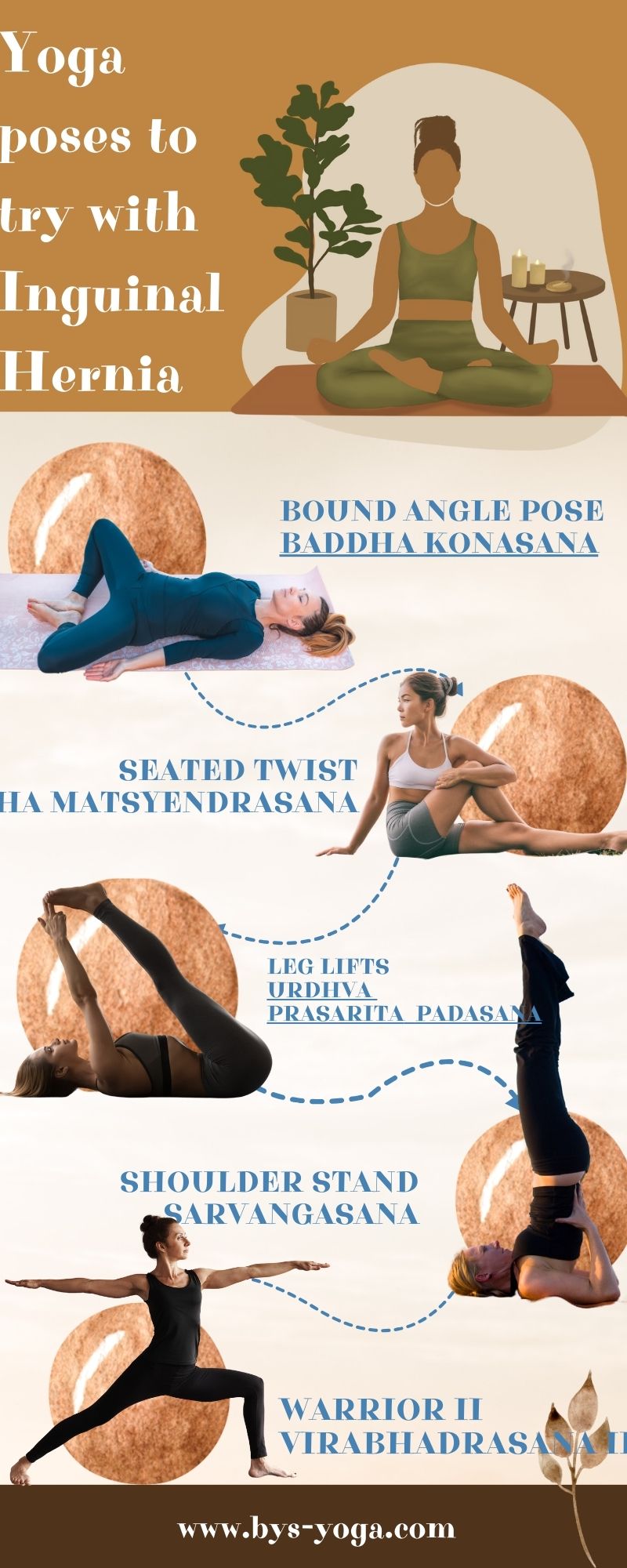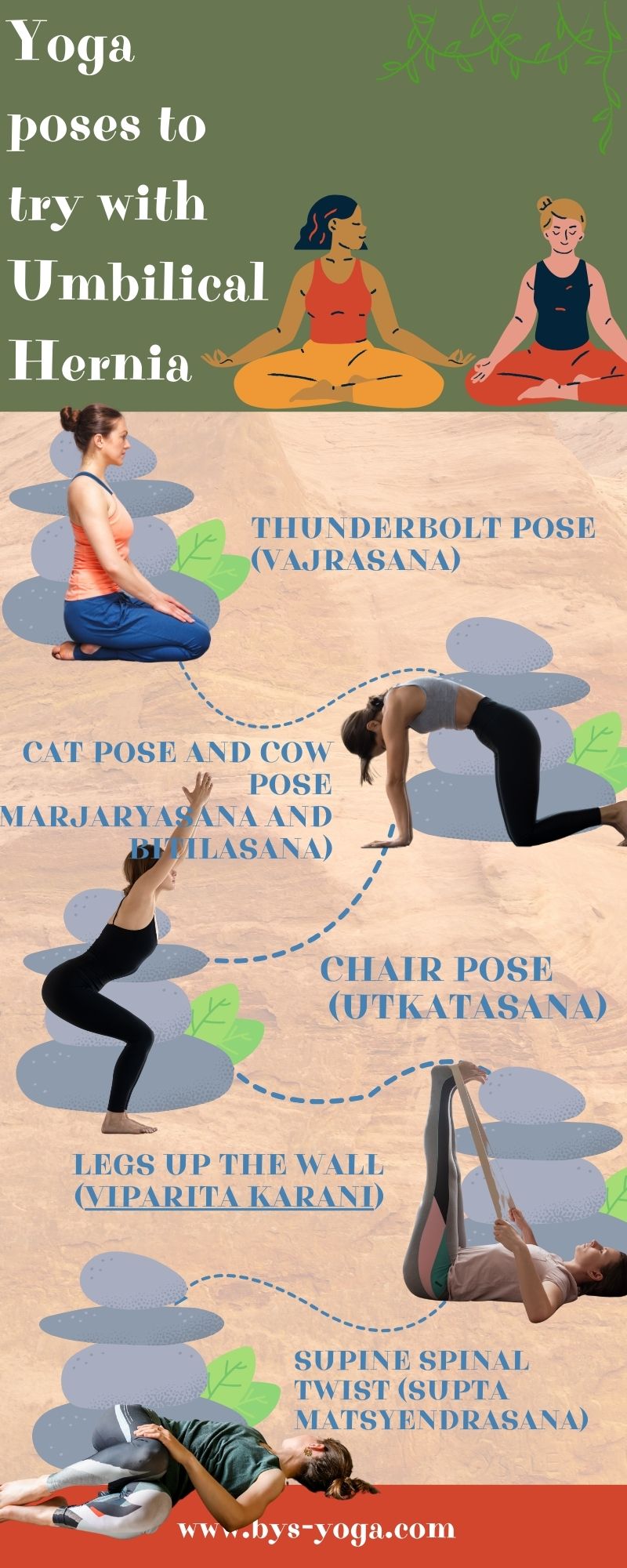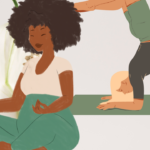When you hear the word “hernia,” your mind might conjure up images of pain, discomfort, and limitations. However, if you’ve been diagnosed with a hernia, you might be wondering if yoga—a practice known for its healing, strengthening, and restorative properties—could be part of your recovery or symptom management plan. Spoiler alert: it can!
But, like anything involving your health, there are precautions to take, poses to embrace, and ones to steer clear of.
Yoga with a Hernia – Is It Safe?

The short answer is yes—with caution. Yoga can be a fantastic way to ease the symptoms and aid in recovery, but only if done mindfully and with proper modifications. If you’ve had surgery to correct a hernia, it’s crucial to wait at least two weeks after a minor surgery or longer after major surgeries before resuming physical activities like yoga.
And, of course, always consult your healthcare provider before hopping back on the mat.
Benefits of Yoga for Hernia
When practiced safely, yoga can offer several benefits for individuals with this condition:
- Alleviates Symptoms: Certain yoga poses can help alleviate pain and reduce discomfort associated with hernias, especially through gentle stretches and breathwork.
- Strengthens the Core: By engaging and stabilizing the abdominal muscles, yoga can help prevent further injury or recurrence of hernias.
- Increases Body Awareness: Yoga helps you listen to your body, identifying discomfort early and adjusting movements accordingly.
- Promotes Relaxation: Restorative poses and deep breathing help reduce stress, which can lower intra-abdominal pressure—a major contributor to hernias.
Let’s explore some specific poses for each type of hernia.
Yoga Poses for Specific Types of Hernias

Each type of hernia has its own set of yoga-friendly poses. These poses are designed to strengthen and stabilize the core while avoiding strain on the affected area.
Hiatal Hernia
If you have a hiatal hernia, gentle seated poses and breathwork can help reduce pressure in your chest and abdomen.

| Pose Name | Description | Benefits for Hiatal Hernia |
| Hero Pose (Virasana) | A seated posture that stretches the thighs and lower back while focusing on deep, calming breaths. | Helps ease symptoms of hiatal hernia by promoting relaxation and breathing. |
| Seated Staff Pose (Dandasana) | Sitting tall with legs extended to strengthen the core and promote good posture. | Reduces hernia symptoms by improving posture and core strength. |
| Seated Forward Fold (Paschimottanasana) | A gentle forward bends to stretch the spine and relieve tension. | Relieves tension and stretches the back, which can alleviate discomfort. |
| Wind Relieving Pose (Apanasana) | A pose designed to help relieve gas and bloating, often related to hiatal hernia symptoms. | Helps relieve bloating and digestive discomfort. |
| Camel Pose (Ustrasana) | A gentle backend that opens the chest and diaphragm, reducing discomfort related to hiatal hernia. | Reduces chest discomfort and promotes breathing. |
Inguinal Hernia
For this type, the key is to focus on poses that strengthen the core without overloading the groin muscles.

| Pose Name | Sanskrit Name | Description |
| Bound Angle Pose | Baddha Konasana | A seated pose that opens the hips and groin, encouraging circulation and flexibility in the pelvic area. |
| Seated Twist | Ardha Matsyendrasana | Twists that help tone and strengthen the core muscles while being gentle on the groin area. |
| Leg Lifts | Urdhva Prasarita Padasana | While lying down, lift one leg at a time. This pose strengthens the lower abdomen without causing strain on the herniated area. |
| Shoulder Stand | Sarvangasana | Inverted pose that alleviates pressure on the groin and abdominal area. Engage the core gently to avoid overstraining. |
| Warrior II | Virabhadrasana II | A standing pose that strengthens the legs, hips, and core, providing stability without aggravating a hernia. |
Umbilical Hernia
When dealing with an umbilical hernia, focus on strengthening the entire abdominal wall without putting undue pressure on the belly button area.

| Pose | Description |
| Thunderbolt Pose (Vajrasana) | A simple seated pose that encourages proper posture and supports deep breathing, both important for strengthening the core. |
| Cat Pose and Cow Pose (Marjaryasana and Bitilasana) | These two poses combined in a gentle flow help to engage and relax the abdominal muscles in a controlled, soothing way. |
| Chair Pose (Utkatasana) | A standing pose that strengthens the core and lower body while providing a safe way to engage the abdominal muscles. |
| Legs Up the Wall (Viparita Karani) | A restorative and relaxing pose that reduces pressure on the abdomen while gently engaging the core. |
| Supine Spinal Twist (Supta Matsyendrasana) | A gentle twist to relieve tension and improve spinal mobility without putting pressure on the navel. |
Yoga Poses to Avoid

While yoga can be incredibly beneficial, not all poses are very friendly. Certain postures can increase abdominal pressure or strain the core, leading to discomfort or even making the hernia worse. Here’s a list of yoga poses you should avoid:
| Pose | Sanskrit Name | Reason to Avoid |
| Cobra Pose | Bhujangasana | Places pressure on the abdomen, especially risky post-surgery. |
| Upward Facing Dog | Urdhva Mukha Svanasana | Puts stress on the abdominal wall, increasing risk during recovery. |
| Bow Pose | Dhanurasana | Requires strong abdominal engagement, which can be too intense for patients. |
| Boat Pose | Navasana | Core-focused, placing excessive strain on the abdominal muscles, making it risky for hernias. |
| Locust Pose | Salabhasana | Increases intra-abdominal pressure, which is not ideal for managing hernias. |
- Use Modifications and Props: Never hesitate to modify poses. Use props like yoga blocks, straps, or cushions to help reduce strain on your core. The goal is to feel supported and comfortable, not overextended.
- Avoid Heavy Lifting and Crunching Movements: Skip any movements that involve heavy lifting or crunches, as these can increase abdominal pressure and strain the hernia site.
- Focus on Deep Breathing: Deep breathing strengthens the abdominal muscles gently. Inhale deeply through your nose, allowing your belly to rise, and exhale slowly, feeling the belly fall. This type of breathing supports healing and promotes relaxation.
- Maintain Proper Posture: Whether you’re sitting, standing, or lying down, pay attention to your posture. Keeping the spine aligned, and the core slightly engaged can prevent further weakening of the abdominal wall.
In Summary
So, should you do yoga with a hernia? Absolutely—if done with mindfulness, caution, and a keen awareness of your body’s limits. Yoga can be a wonderful way to strengthen your core, ease symptoms, and promote relaxation, but always remember to consult with your healthcare provider before starting or resuming any yoga practice after a hernia diagnosis or surgery.







